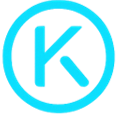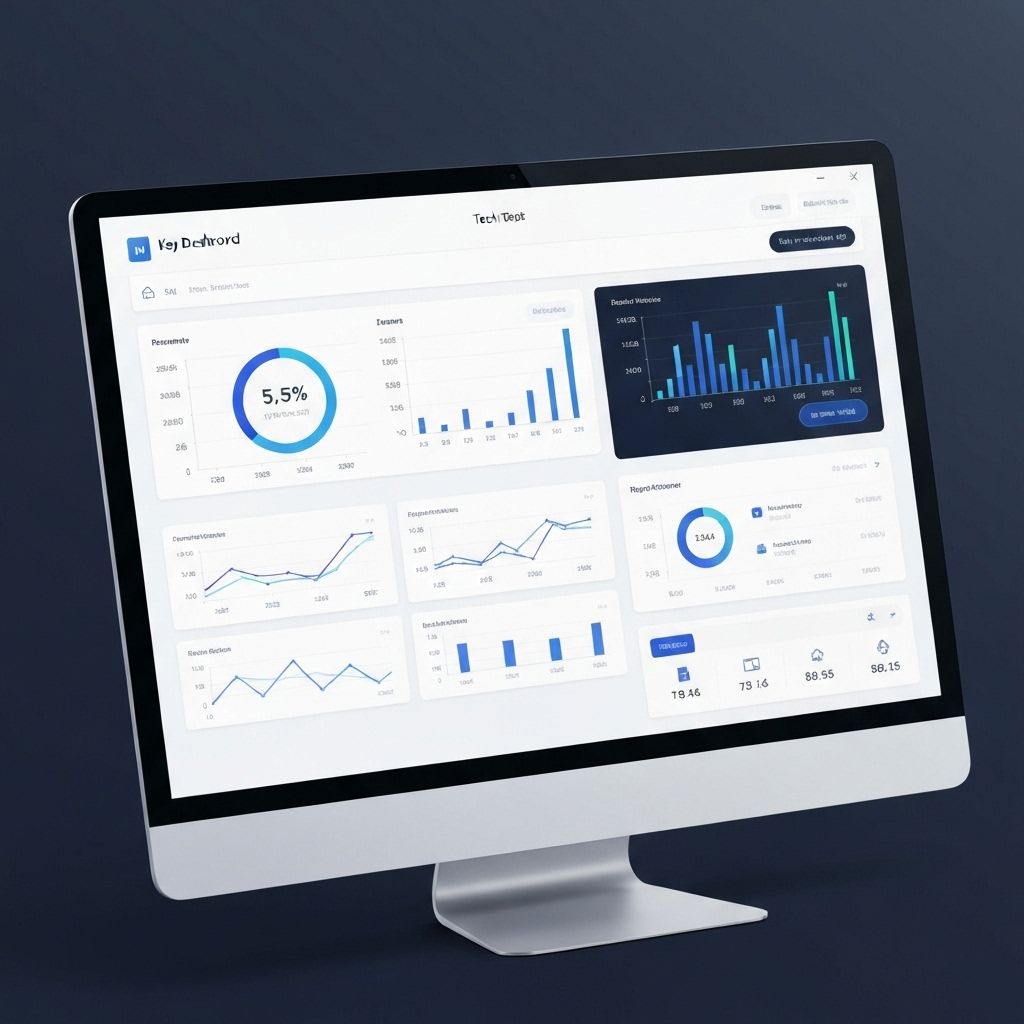Next.js has revolutionized the way we approach modern web development, and at Karibu WebDev, we've seen firsthand how it transforms the development experience and end-user performance. After building dozens of websites and web applications with Next.js, we can confidently say it's the best framework for modern web development—especially for businesses in Kenya and East Africa.
In this article, we'll explain why Next.js has become our framework of choice and why it should be yours too.
What is Next.js?
Next.js is a React framework built by Vercel that makes it easy to build fast, SEO-friendly web applications. It provides a powerful set of features out of the box that would otherwise require significant configuration and custom code.
Think of it as React with superpowers—all the flexibility and power of React, plus built-in solutions for the most common challenges in web development.
Why Next.js Stands Out
1. Exceptional Performance Out of the Box
Performance is critical for user experience and business results. Studies show that a 1-second delay in page load time can reduce conversions by 7%. For Kenyan businesses where many users are on slower mobile connections, performance is even more critical.
How Next.js Delivers Performance:
Automatic Code Splitting Next.js automatically splits your code into smaller chunks, so users only download the JavaScript they need for the current page. This dramatically reduces initial load times.
Image Optimization The built-in Image component automatically optimizes images, serving them in modern formats like WebP, with proper sizing for different devices. This alone can reduce image file sizes by 50-70%.
Server-Side Rendering (SSR) Pages can be rendered on the server, sending fully-formed HTML to the browser. This means users see content immediately, even before JavaScript loads.
Static Site Generation (SSG) For content that doesn't change frequently, Next.js can generate static HTML at build time. These pages load almost instantly and can be served from CDNs worldwide.
Real Results:
A client's WordPress website was taking 8-12 seconds to load. We rebuilt it with Next.js, and load times dropped to 1.2 seconds—a 10x improvement. Their bounce rate decreased from 65% to 28%, and conversions increased by 140%.
2. SEO-Friendly by Default
Many modern JavaScript frameworks struggle with SEO because search engines have difficulty indexing client-rendered content. Next.js solves this completely.
SEO Advantages:
Server-Side Rendering Search engines receive fully-rendered HTML, making it easy to index your content. No more SEO penalties for JavaScript-heavy sites.
Meta Tag Management Next.js makes it easy to set page-specific meta tags, titles, and descriptions—critical for SEO.
Automatic Sitemap Generation Generate sitemaps automatically to help search engines discover and index your pages.
Fast Loading = Better Rankings Google considers page speed a ranking factor. Next.js sites are fast, giving you an SEO advantage.
Real Results:
- Organic traffic increased 280%
- Ranking on first page for 45+ keywords (up from 8)
- Conversion rate from organic traffic increased 65%
- Revenue from organic search increased 320%
3. Excellent Developer Experience
Happy developers are productive developers. Next.js provides an exceptional development experience that speeds up development and reduces bugs.
Developer-Friendly Features:
Fast Refresh See your changes instantly without losing component state. This makes development incredibly fast and enjoyable.
File-Based Routing No need to configure routes manually. Just create a file in the pages directory, and it automatically becomes a route. Simple and intuitive.
API Routes Build backend API endpoints right in your Next.js app. No need for a separate backend server for simple functionality.
TypeScript Support First-class TypeScript support out of the box. Catch errors before they reach production.
Built-in CSS Support Support for CSS Modules, Sass, and CSS-in-JS solutions. Style your app however you prefer.
Impact on Development:
Projects that would take 3-4 months with traditional approaches can be completed in 6-8 weeks with Next.js, saving clients time and money while delivering better results.
4. Flexibility in Rendering Strategies
Different pages have different needs. Next.js lets you choose the best rendering strategy for each page.
Rendering Options:
- Generated at build time
- Served instantly from CDN
- Perfect for content that doesn't change often
- Rendered on each request
- Always up-to-date
- Great for dynamic content
- Rendered in the browser
- Highly interactive
- Ideal for authenticated areas
- Static pages that update periodically
- Best of both worlds: speed + freshness
- Update content without rebuilding entire site
Real Example:
- Homepage: ISR (updates every 5 minutes)
- Article pages: SSG (generated at publish time)
- User dashboard: CSR (personalized, interactive)
- About/Contact pages: SSG (rarely changes)
This hybrid approach delivered optimal performance for each page type.
5. Built-in API Routes
Next.js includes a built-in API routing system, allowing you to create backend endpoints without a separate server.
Benefits of API Routes:
- No need for separate backend server (for simple apps)
- Same codebase for frontend and backend
- Easy to deploy together
- Serverless by default (scales automatically)
- Perfect for form submissions, webhooks, integrations
Use Cases:
- Contact form submissions
- Newsletter signups
- Payment processing
- Third-party API integrations
- Authentication endpoints
- Webhook handlers
Real Example:
- Contact form submission (sends email via SendGrid)
- Newsletter subscription (integrates with Mailchimp)
- Payment processing (Stripe integration)
- M-Pesa payment verification
All in the same Next.js app, no separate backend needed.
6. Perfect for E-Commerce
Next.js is particularly well-suited for e-commerce websites, where performance and SEO are critical.
E-Commerce Advantages:
Fast Product Pages Use SSG or ISR to serve product pages instantly while keeping inventory updated.
SEO for Product Discovery Server-rendered pages ensure search engines can index your products properly.
Image Optimization Automatically optimize product images for fast loading without sacrificing quality.
Dynamic Pricing Server-side rendering allows you to show personalized pricing, discounts, and availability.
Real Results:
- Page load time: 9 seconds → 1.8 seconds
- Bounce rate: 72% → 31%
- Conversion rate: 1.2% → 3.1%
- Revenue: +185% in 6 months
7. Deployment and Hosting Made Easy
Next.js apps can be deployed anywhere, but they're optimized for Vercel (the company behind Next.js), making deployment incredibly simple.
Deployment Benefits:
One-Click Deployment Connect your GitHub repo and deploy automatically on every push. No complex CI/CD setup needed.
Global CDN Your site is automatically distributed to CDN nodes worldwide for fast loading everywhere.
Automatic HTTPS SSL certificates are automatically provisioned and renewed. Security by default.
Preview Deployments Every pull request gets its own preview URL for testing before merging.
Serverless Functions API routes automatically become serverless functions that scale infinitely.
Real Impact:
Deployment time: Hours or days → 5 minutes Server management: Complex → Zero Scaling: Manual → Automatic Cost: High fixed costs → Pay only for usage
8. Perfect for Kenyan Businesses
Next.js is particularly well-suited for Kenyan businesses and the East African market.
Why It Works for Kenya:
Performance on Slow Connections Optimized loading works well even on 3G connections common in Kenya.
Mobile-First Automatic responsive images and code splitting benefit mobile users (80%+ of Kenyan internet users).
Cost-Effective Hosting Serverless deployment means you only pay for actual usage, not idle servers.
Fast Development Faster development = lower costs for clients.
Easy Maintenance Simple deployment and updates mean lower ongoing costs.
Integration-Friendly Easy to integrate with M-Pesa, local payment gateways, and African APIs.
Real-World Next.js Projects by Karibu WebDev
Project 1: E-Commerce Platform
Challenge: Client needed a fast, SEO-friendly online store for electronics.
- ISR for product pages (updates every 10 minutes)
- SSG for category pages
- API routes for cart and checkout
- Integration with M-Pesa and card payments
- Load time: 1.6 seconds
- 95+ Google PageSpeed score
- 280% increase in organic traffic
- 185% revenue increase
Project 2: Corporate Website
Challenge: Professional services firm needed modern, fast website with blog.
- SSG for all pages
- Markdown-based blog
- Contact form via API routes
- Deployed on Vercel
- Load time: 0.9 seconds
- 100 Google PageSpeed score
- 320% increase in inquiries
- First page rankings for key terms
Project 3: SaaS Application
Challenge: Startup needed web app for business management.
- SSR for dashboard (personalized data)
- API routes for backend logic
- Authentication with NextAuth
- Real-time updates
- Fast, responsive application
- Excellent user experience
- Easy to maintain and update
- Scales automatically with growth
Next.js vs. Alternatives
Next.js vs. WordPress
- Slower performance
- Security vulnerabilities
- Plugin conflicts
- Difficult to customize
- Higher hosting costs
- 5-10x faster
- More secure (no database to hack)
- No plugin conflicts
- Fully customizable
- Lower hosting costs
Next.js vs. Traditional React
- Poor SEO out of the box
- Manual configuration needed
- No built-in routing
- Complex deployment
- Slower initial load
- SEO-friendly by default
- Zero configuration needed
- File-based routing
- Simple deployment
- Fast initial load
Next.js vs. Other Frameworks
- Good for static sites
- Slow build times for large sites
- Less flexible rendering options
- Similar to Next.js but for Vue
- Smaller ecosystem
- Less corporate backing
- Flexible for any type of site
- Fast builds even for large sites
- Multiple rendering strategies
- Huge React ecosystem
- Strong corporate backing (Vercel)
Getting Started with Next.js
For Businesses:
If you're considering a new website or web application, Next.js should be your default choice. It delivers:
- Better performance = better user experience = more conversions
- Better SEO = more organic traffic = lower customer acquisition costs
- Faster development = lower costs and faster time to market
- Easy maintenance = lower ongoing costs
For Developers:
If you're a developer in Kenya looking to level up your skills, learning Next.js is one of the best investments you can make. It's:
- In high demand globally
- Well-documented and easy to learn
- Backed by a strong community
- The future of React development
How Karibu WebDev Can Help
At Karibu WebDev, we specialize in building high-performance Next.js websites and applications for Kenyan businesses.
Our Next.js Services:
- Fast, professional websites
- SEO-optimized
- Mobile-friendly
- Easy to update
- High-performance online stores
- M-Pesa and card payment integration
- Inventory management
- SEO for product discovery
- Custom business applications
- Dashboards and admin panels
- API integrations
- Real-time features
- WordPress to Next.js migration
- Legacy site modernization
- Performance optimization
- SEO preservation
Conclusion: The Future is Next.js
Next.js has become the gold standard for modern web development, and for good reason. It delivers exceptional performance, excellent SEO, great developer experience, and flexibility—all while being cost-effective and easy to deploy.
For Kenyan businesses, Next.js offers a competitive advantage: faster websites that rank better in search engines, convert more visitors, and cost less to maintain.
At Karibu WebDev, we've seen the transformative impact of Next.js on our clients' businesses. Better websites lead to more traffic, more conversions, and more revenue.
Ready to build a modern, high-performance website with Next.js? Contact Karibu WebDev today for a free consultation.
Call/WhatsApp: [Your Number] Email: [Your Email] Website: www.karibuwebdev.com
Let's build something amazing together with Next.js.





